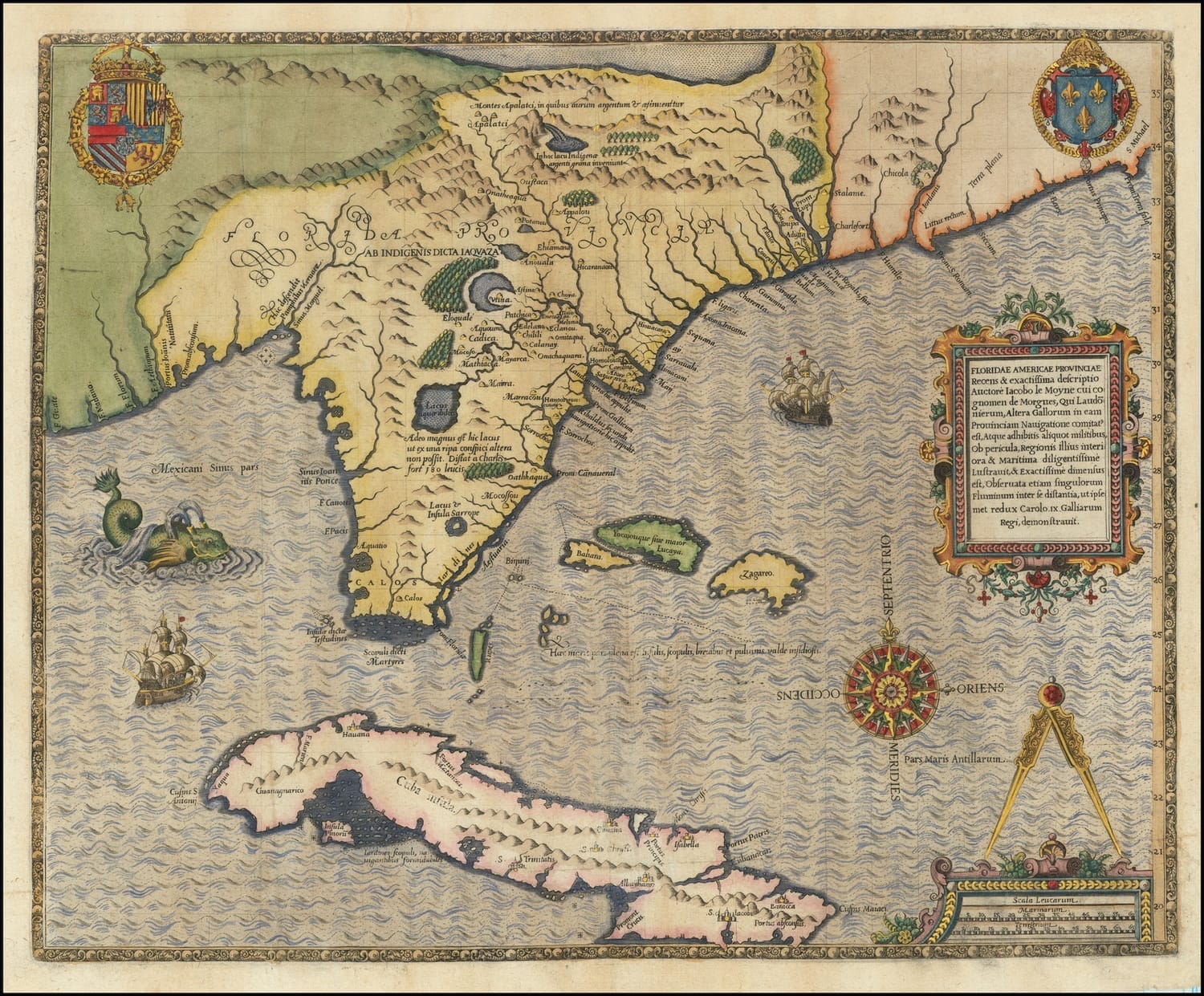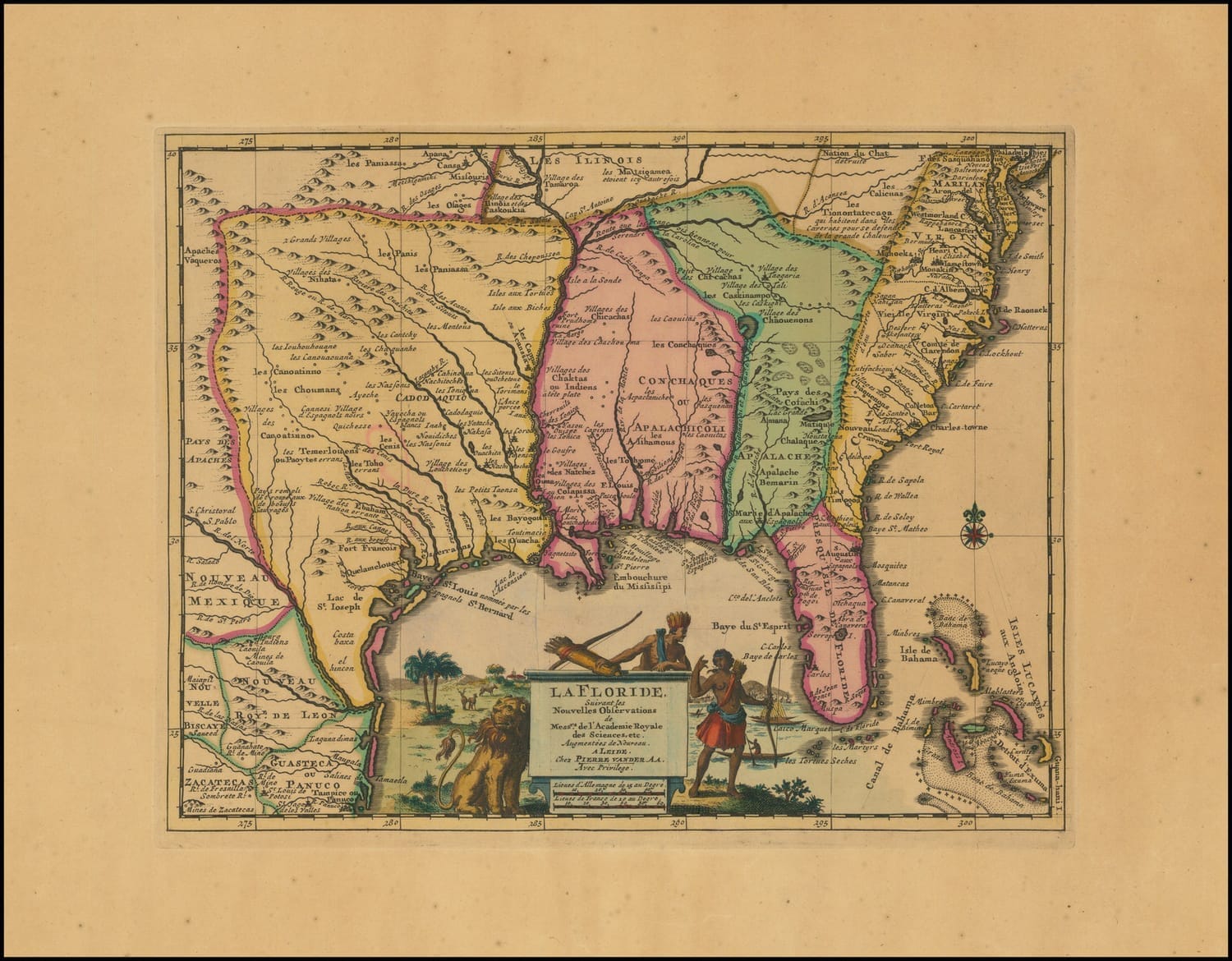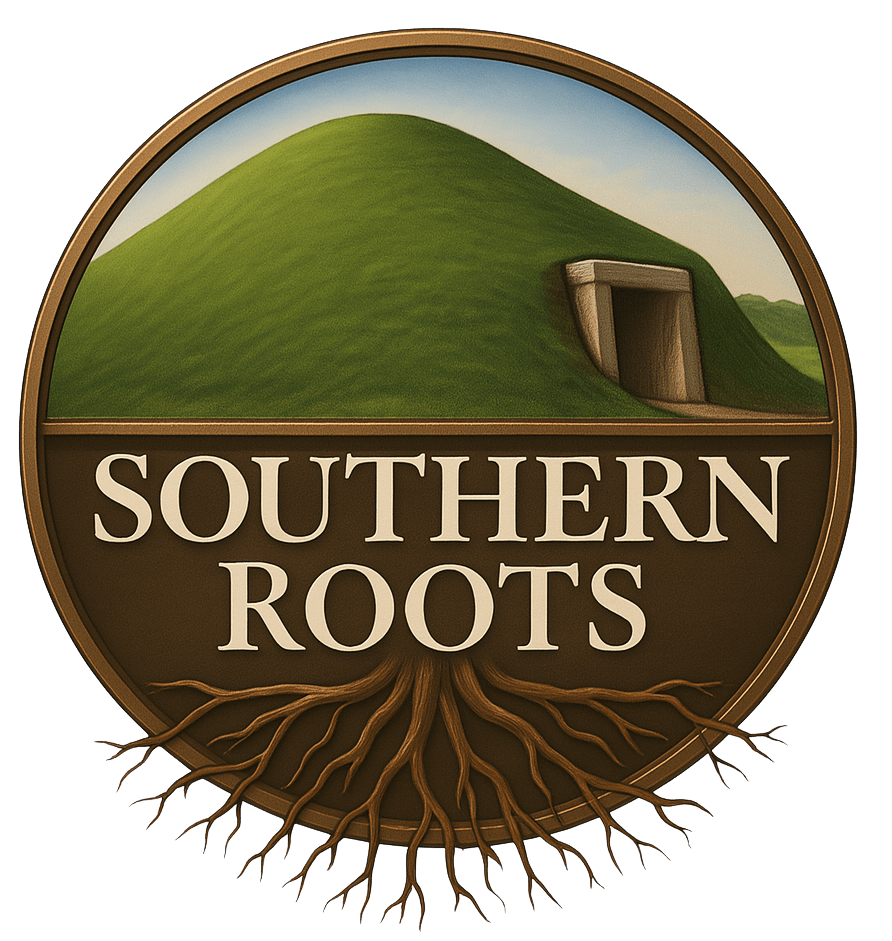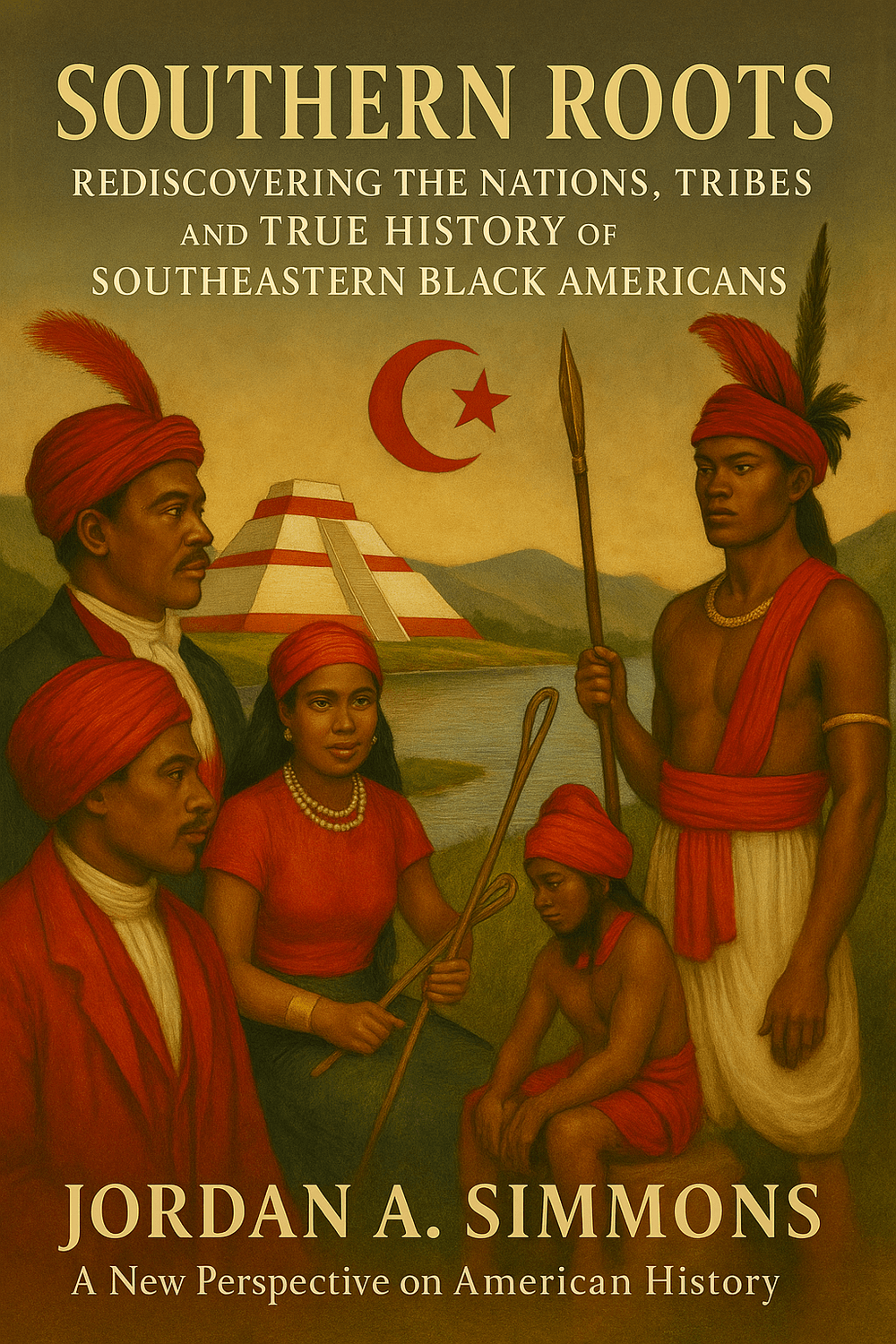The Forgotten Empire: Uncovering the True History of the Apalachee Nation
Could it be that many so-called "Black" people in the American South are actually the descendants of a forgotten American empire—one with temples, priesthoods, international trade, and legends of giants?
Long before the Southeastern United States was colonized, it was home to a powerful and expansive civilization known as the Apalachee. Their name has largely disappeared from modern discourse, overshadowed by broader designations like "Creek" or "Muscogee." But as we revisit early historical records, a much richer and more astonishing picture emerges.
A Nation, Not a Tribe
According to Charles de Rochefort’s The History of the Caribby-Islands, the Apalachee were not a tribe, but the sovereign rulers of an expansive and sacred province. Located in what is now the Southeastern United States, their territory began at an elevation of thirty-three degrees and twenty-five minutes north of the Equinoctial Line and extended from the Gulf of Mexico to the interior provinces of Georgia, Alabama, and beyond. This was not simply a geographical claim—it was a spiritual one. Their nation was “seated on high mountains,” with a language distinct from surrounding nations, and a religious system built upon devotion to the Sun (Rochefort, History of the Caribby-Islands, pp. 210–211).

Figure 1. 1591 Map of Florida by Jacques Le Moyne de Morgues.
This early European map names the interior of the Southeast as the domain of “Apalache,” with sacred mountains, rivers, and ceremonial centers marked long before modern state lines. The placement of Apalache in central Florida and Georgia reflects how early the nation was recognized as a power.
Their structure of government included temples, priesthoods, and elected governors—each ordained through rituals and ceremonies conducted at sacred cities like Alachua, Apalachen, and Amana. The Apalachee were known to receive and absorb refugee communities, especially those who had fled other colonies or escaped servitude in places like Hispaniola and Puerto Rico. According to Rochefort, these adopted groups learned the Apalachee language and were made part of the nation through loyalty and sacramental bond (p. 215).
The Apalachee were also the progenitors of several other confederacies and towns, including the Calchuyans, the Charibes (or Caribs), and even the ancient Guacata. Their sacred governance inspired other nations to model their own spiritual and social systems after the Apalachee rites (pp. 218–219).
Apalachee: Giants of the Southeast
James Adair, writing in the 18th century, recounts both oral traditions and Spanish reports that portray the Apalachee as physically gigantic and spiritually elevated. He cites reports from Alvaro Nunez and others that the Apalachee were "such a gigantic people, as to carry bows, thick as a man's arm, and of eleven or twelve spans long, shooting with proportional force and direction." He continues, stating that their kings lived to be 250 or even 300 years old, and that they had now "exceedingly degenerated, in height of body, largeness of defensive arms, and ante-diluvian longevity" (Adair, History of the American Indians, p. 200).
Adair further compares the Apalachee to the biblical Anakim, writing: "I am afraid these early and extraordinary writers would scarcely know the descendants of those Apalachee Anakim, if they now saw them. They are at present the same as their dwarfish red neighbours; sic transit gloria mundi." (Adair, p. 201).
Apalachi: The Original Province
Rather than being a simple ancestral root of the Creek Confederacy, the Apalachee—or Apalachi—existed as an independent province with its own geographic, political, and ceremonial integrity. Albert Gatschet's A Migration Legend of the Creek Indians reveals that the name Apalatchūkla once referred to a powerful town near the Chattahoochee River, 1½ miles below Chiaha, called the "Great Town" by the people of the region. This town and its people were known for their aversion to warfare and their strong ceremonial traditions (Gatschet, A Migration Legend, pp. 74–75).
Gatschet explains that the Apalachee language belonged to a unique dialect group related to but distinct from Creek, and their territory encompassed not only the lower Chattahoochee basin but also extended into the Gulf region. Spanish documents record a number of towns including San Luis de Apalachi, Ibitachuca, Pattali, Santa Cruz, and Talpatqui. By 1688, Apalachee chiefs were writing to the King of Spain in protest of abuses by colonial governors, indicating a strong sense of sovereignty and political structure (Gatschet, p. 76).
Later, many Christianized Apalachee were relocated by the French to Mobile after being raided by the Alibamu, where they retained their customs and religious rites. Though scattered, their ceremonial and civic memory persisted.
This reveals not a single thread leading to Creek identity—but a sovereign nation whose remnants later contributed to broader confederacies while maintaining distinct roots.
How Empire Fell: Raids, Slavery, and Reclassification
The collapse of the Apalachee nation was not natural—it was engineered. Between 1702 and 1708, a series of colonial expeditions led by James Moore and other Carolina officials devastated Apalachee settlements. Lauber reports that more than 1,400 people from northern Florida towns were sold into slavery, with many others captured during violent raids on Apalachee missions and villages (Indian Slavery in Colonial Times, pp. 120–122).
These were not random attacks. Moore's own letters admit he enslaved entire towns and sent hundreds of Apalachee captives to Charleston to be sold for profit (p. 387). Survivors were either marched off to bondage in the West Indies or forcibly resettled. Even the Christianized Apalachee were not spared. Despite their conversion and obedience, they too were enslaved and dispersed.
Apalachee leaders pleaded with religious authorities to stop the brutality. In 1705, missionaries in South Carolina reported that Apalachee slaves were eager for baptism, but many masters denied them both marriage and conversion, insisting that Indians and Africans were mere beasts (p. 266). The masters knew: to erase the faith was to erase the humanity.
Some captives were sold directly from Pensacola (p. 431); others were enslaved through military alliances with tribes like the Chickasaw and Westo, encouraged by colonial agents to prey on Apalachee for profit (pp. 170–171). By 1715, raids continued as the Yamasee and "Creek" joined in, attacking the weakened survivors and further fueling the market (p. 373).
Thus, the fall of the Apalachee was not just military—it was bureaucratic. Those who weren’t killed were renamed, reclassified, and erased from public memory. Some became "Creek" through forced absorption. Others, with darker features, were categorized as "Negroes."
What was once a massive nation became a forgotten caste.
Memory Preserved in Names and Towns
John Swanton, in Early History of the Creek Indians, presents extensive testimony on the survival of Apalachee identity through place names, mission records, and settlement histories. He documents dozens of towns associated with the Apalachee, including Ibitachuca, Yapalaga, Talpatqui, and Capola (Swanton, Early History, pp. 110–113). These towns span from the Apalachicola River to what is now Alabama, Mississippi, and Louisiana.
Swanton shows that even after the fall of their missions and the dispersal of their population, Apalachee people remained highly mobile, forming new towns near Red River, San Marcos, and beyond (pp. 126–128). Some became known as Mobilian-speaking bands; others retained bilingual traditions. The names may have changed, but the ceremonial fire and memory persisted.
One French account noted that the Apalachee were so skilled in diplomacy that they were “more satisfied with their quality than others who experienced great satisfaction” from French alliances (p. 127). These were not passive converts—they were sovereign actors adapting for survival.
This continuity proves that the Apalachee did not vanish—they transformed, adapted, and persisted under new names.

Figure 2:
1710 French Map – “La Floride suivant les Nouvelles Observations.”
This French map from the early 18th century still names the interior as “Apalacha” and “Apalachicoli,” even after the dispersal of the Apalachee nation. It shows continuity of memory across time, with the name preserved on the land itself despite forced removals, reclassifications, and warfare. Notice the map depicts the Americans of the southeast as brown and dark complexioned people with a lion; a strong symbolic connection to Africa.
Why This Matters Today
The story of the Apalachee is not just about the past. It is about identity, erasure, and recovery. Many Black Americans in the Southeast may descend from these ancient fire-holding nations. Their story was never truly lost—only hidden beneath labels imposed by colonizers.
To recover the truth is to recover sovereignty, culture, and the knowledge that we are more than the names history gave us.
We Are Southern Roots.
Let the fire be remembered.
Let us know what you think in the comments!

